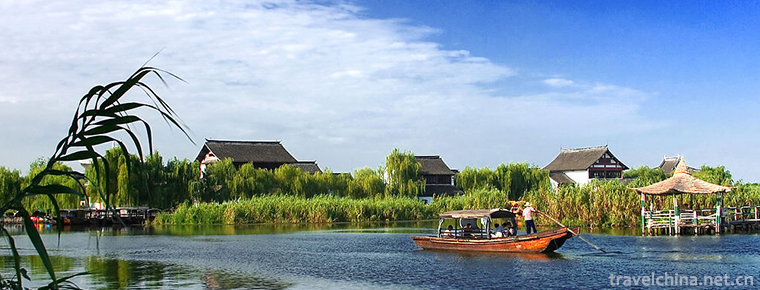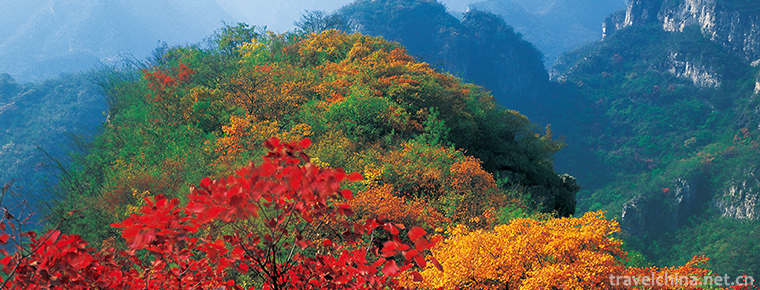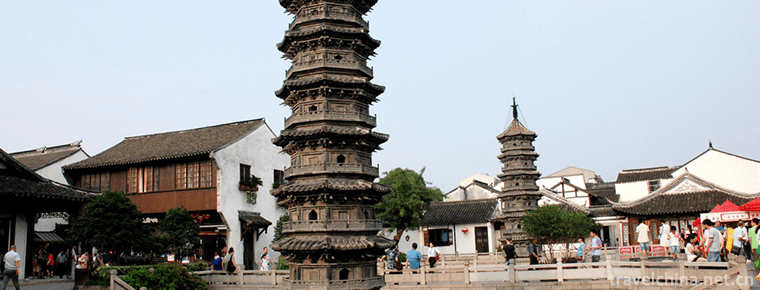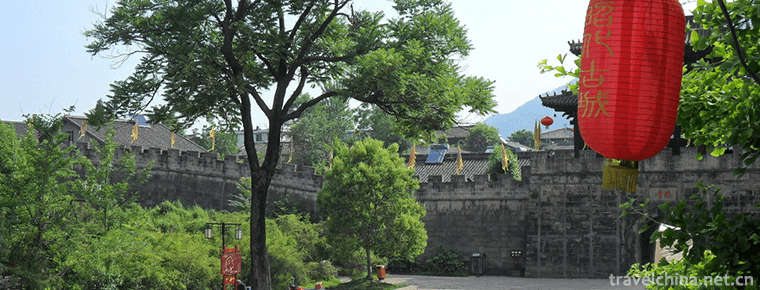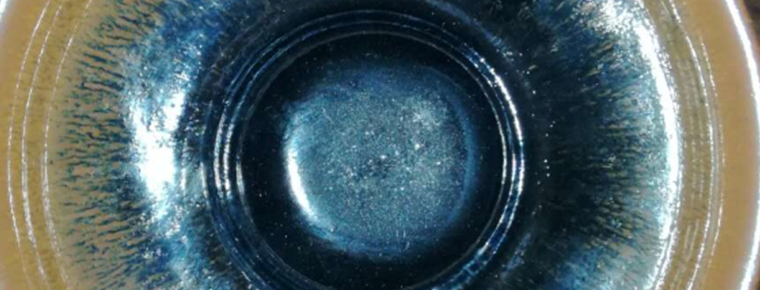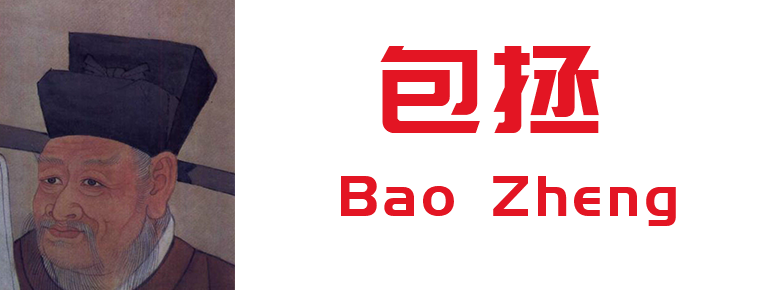Purple Peng mountain
Purple Peng mountain
Zipeng Mountain, also known as Liling Mountain and North Jiuhua Mountain, is located in the south of Zipeng Town, Hefei City, Anhui Province. It is about 18 kilometers away from Hefei City. Since the Qing Dynasty, it has been known as "the first mountain in Luyang".
The forest area of Zipeng Mountain Scenic Area is about 3500 hectares, there are more than 470 kinds of plants and more than 120 kinds of birds. There are 30,000 herons alone.
In July 1992, it was approved as National Forest Park by the Ministry of Forestry. In September 1998, it was named a provincial scenic spot by the Anhui Provincial Government. In 2010, it was approved by the National Tourism Administration as a national AAAA-level tourist attraction.
Historical evolution
"Zipeng Mountain" is also known as Liling Mountain. There are three tombs of Li Dian, a general of the Wei Dynasty, on the mountain. In that year, Li Dian guarded Luzhou and built a temple on the top of the mountain to worship Li Ling, the ancestor of the seventh generation.
According to folklore, "Zipengshan" is named after monks'purple robes and Penglai Xiandao, which implies "greet purple air and go to Penglai". There is a couplet on the Mountain Gate of Zipeng Mountain. The couplet is: Ziqi comes to the jungle in the East for thousands of years, and the couplet is: Pengshan goes to ten places to worship the image of blessing. The top and bottom initials coincide with the word Zipeng. The word "Zipeng" gives a strong Buddhist color to the mountain name.
In July 1992, it was approved as National Forest Park by the Ministry of Forestry.
In September 1998, it was named a provincial scenic spot by the Anhui Provincial Government.
In 2001, it was approved as AA-level scenic spot by the National Tourism Administration.
In 2010, it was approved as AAAA-level scenic spot by the National Tourism Administration.
geographical environment
Location context
Zipeng Mountain is located in the south of Zipeng Town, Hefei City, about 18 kilometers away from the urban area of Hefei. The forest area of the whole area is 3500 hectares. It faces Daozhi Mountain in the east, Qianzi Mountain in the South and Radish Mountain in the west. The area of the bottom of the mountain is 6 square kilometers and the main peak is 188.7 meters above sea level. The top of the main peak is flat, the mountain in the north is gentle, and the mountain in the south is steep and tall.
Climatic characteristics
Zipeng Mountain is located in the mid-latitude zone. It belongs to the subtropical monsoon humid climate. The monsoon is obvious, the four seasons are distinct, the climate is mild and the rainfall is moderate. The annual average temperature is 15.7 C, the annual average precipitation is about 1000mm, the annual sunshine time is about 2000 hours, the annual frost-free period is 228 days, the average relative humidity is 77%.
natural resources
There are 470 kinds of plants and 120 kinds of birds in Zipeng Mountain. There are 30,000 herons alone. Mount Zipeng is a unique three-dimensional landscape painting in Luyang, which is characterized by mountains and rivers, dense forests and abundant natural and cultural landscape, especially with the four characteristics of weird rocks, strange trees, clear water and rare birds.
Historical humanism
Zipeng Mountain is north of Hefei, with convenient transportation. Drive out of the city, but more than 20 kilometers, can go directly to the top of the mountain, and then travel 8 kilometers, you can drive into the hinterland of Yuandong Mountain. Zipeng Mountain is also called Liling Mountain. There are three tombs of Li Dian, a general of the Wei Dynasty, on the hill. At that time, Li Dian town guarded Luzhou and built a temple on the hilltop to worship Li Ling, the ancestor of the seventh generation. In Tang Dynasty, Li Ling Temple was changed into Xilu Temple. During the reign of Guangxu in Qing Dynasty, Li Enshou wrote Zipeng Mountain Records, which had been described in detail. Unfortunately, there were many fires and wars, and Xilu Temple was repeatedly destroyed. Together with Bagua Pavilion, Tonggong Pagoda, Bell and Drum Tower, Wanghu Tower and the wishful and ancient tripod gifted by the Qing Emperor, the Longzang Quanjing and the Ming Xuande Furnace, which were gifted by Emperor Cixi, disappeared. During the Tongzhi period of the Qing Dynasty, Yuan Hongmo, a general of the Taiping Heavenly Kingdom, returned to his fields to become a monk and renovated more than 100 temples. At this time, the palace is magnificent and magnificent. It is one of the most famous ancient temples in central Anhui and the upper court of Hefei Mingjiao Temple. It is called Xiaojiuhua. On the mountain, there are also the tomb of Ge Sheng, the anti-Jin hero, Zhou Gong Temple, the governor of Wu State, and the sites of Wenchang Pavilion, Zhenwu Temple, Guanyin Hall and Tibetan Jinglou, which can make visitors think about the past. Under the hill, there are dozens of villages, big and small. The famous villages are Liu Lao-wei and Zhang Lao-wei. They are the former residences of the Governor of Zhili, Liu Mingchuan, the first governor of Taiwan, General Huai Jun and Governor Zhang Shusheng of Guangzhou and Guangdong provinces respectively, which show a unique picture of an ancient residence in Hefei.
Main attractions
Summary
Yuan Hongmo, a well-known Taiping general, plunged into Xilu to take Tongyuan, the name of Falun, and built 124 palaces. There are many famous historic sites on the mountain, such as Xilu Temple, Baiyun Temple in Song Dynasty, 500 Arhatic sculptures, Zhou Yu Reading Office, Inkstone Pool, Wenchang Pavilion, Li Dian Tomb and the former residence of Liu Mingchuan, the first governor of Taiwan. The natural ecology of Zipeng Mountain Scenic Spot keeps good, and there are many places of interest and historic sites. The main ones are: the famous Shaxi Lusi Temple in central Anhui, which was built in the three kingdoms; the tomb of Li Ling, the descendants of the general of the Western Han Dynasty and Li Dian, the famous general of the three kingdoms; the former residence of Liu Mingchuan, the first governor of Taiwan, and so on. The famous landscapes include the Buddha of the Third Age, the Buddha of Mijin and the statue of 500 Arhats on the cliff. The revolutionary historic sites include the Central County Committee of Hefei, the special committee of Northwest Anhui, the birthplace of the independent guerrilla division of Northwest Anhui, and Xiaolianggang, the former site of the county government in the early days of the founding of Feixi County. When creating the majestic Dabie Mountains across Hubei, Henan and Anhui provinces for the land of Shenzhou, the gods and gods of nature have beloved to throw down a band of mountains, which are the remnants of the Dabie Mountains, stretching from west to East in the central part of Feixi County under Hefei's jurisdiction, as long as 25 kilometers of Zipeng Mountains. Zipeng Mountain was approved as National Forest Park by the Ministry of Forestry in July 1992 for its rolling hills, dense forests, pleasant climate, pollution-free water quality, rugged rocks and numerous scenic sites. Zipeng Mountain Forest Park covers an area of nearly 100 square kilometers, with dense forests and numerous monuments. There are more than 30 hilltops with names and histories in Zipeng Mountain Forest Park. At the same time, Hefei is the nearest (only 35 kilometers) to Hefei, and there is a famous Xilu Temple on the top of the mountain. It was called "the first famous mountain in Luyang" in the Qing Dynasty, and it is now a scenic spot in Anhui Province.
Mountain Gate
The Mountain Gate of Zipeng Mountain is a palace-style building with three columns and four gates, which is quite magnificent. There is a plaque on the mountain gate, which is written as "the first mountain in Luyang". There are three couplets on the mountain gate. The first couplet in the middle is: Ziqi comes to the jungle for a long time and beautiful; the next couplet is: Pengshan goes to the ten sides of the masses to look up to the lucky margin. The top and bottom initials coincide with the word Zipeng. The word "jungle" in Lianzhong refers to the dense forest of Zipeng Mountain and Buddhist temples. The other two couplets are "Entertaining the eyes and looking at the steep mountains and Maoming forests to repair bamboo; Concentrating on the sound of apricot rain and pine wind and fan bells"; the other couplet is "Huaijun's hometown wind and cloud meeting; Wonderful scenery of the forest and sea bright pearl".
Immortal lake
The lake is a natural bathing ground and water paradise with clear water and excellent water quality. One hundred and ten meters away from the "immortal lake" is the "Buddha Garden" scenic spot. The gate of the stele square of "Buddha Garden" sits in the west facing east, implying the meaning of "purple air coming east", and the word "Buddha Garden" is written on the front of the gate. There is a pair of stone lions in front of the gate of the Buddhist Garden, which are enclosed by a square high stone fence. On both sides of the mountain, there are many different and vivid Buddha statues. Through stone sculptures and monuments, along the winding mountain trails, along the way, you can enjoy the charm of Buddhist culture in Zipeng Mountain. Shortly after crossing the "Buddhist Garden", Xilu Temple arrived. In front of the temple, there is a Pinus massoniana like a peacock. The tree is over ten feet tall. Looking up, the old mark on the pine tree looks like the feathers on the peacock's neck. The thick and curved trunk stretches upward and reaches the sky. The branches on the top of the tree grow horizontally, just like the peacock's "open screen". The natural growth of this peculiar form of "peacock pine" has become a famous tree and landscape in Zipeng Mountain.
West Lu Temple
Founded in the late Eastern Han Dynasty, the Tang Dynasty was rebuilt as the "West Luchan Temple". Since the Tang Dynasty, due to the frequent ups and downs of war, the late Ming and early Qing Dynasty, Jingcheng, Jianrong and Tongyuan monks in the late Qing Dynasty had a major renovation. According to the Records of Zipeng Mountain, Tongyuan monk built 124 palaces during the Tongzhi reign, including "five big mountain gates for Mituo Buddha, about four statues of heavenly kings, fifteen dizang palaces, one wooden pagoda in the palace and ten kings around the palace". Plus the Great Buddha Hall, the Back Hall, the Palace Hall, the Zen Hall, the Guanyin Hall, the Bagua Pavilion on the second floor, the Bell Tower Pavilion, the Tibetan Palace, the Lao House, the Tonggong Pagoda, the Wanghu Tower and so on, it is really a magnificent palace with extraordinary momentum. The temple also contains many cultural relics and relics of Su Dongpo, one of the Song inkstones. Xilu Temple can be called a famous temple and a treasure temple. It also became the largest temple group in Hefei at that time. In the Buddhist Hall of Xilu Temple, the statue of the Third Buddha is worshipped. On the left side of the Buddhist Hall is an ancient Ginkgo biloba tree called "living fossil". It is over 10 meters high and about 10 circles in diameter at breast height. This Ancient Ginkgo tree, which has a history of more than 500 years, is still densely leafed and green except that its trunk tilts slightly to one side and is slightly old-fashioned.
Around Xilu Temple, pine and bamboo are embraced, ancient trees are towering, and the environment is quiet and beautiful. The "Wanghu Tower" beside the temple is the tallest building of Xilu Temple. Near the stairs, you can see the scenery of Dayan Bay, known as "Bright Pearl" under Zipeng Mountain, and the infinite scenery of Chaohu Lake, which has a wide view. From the forest trail beneath the temple to the southeast, it came to the "fairy cave". The rocky rocks here, stone elephants, stone dogs and stone cattle, seem unreal and fascinating. "Fairy Cave" has two orifices which are connected with each other. It has always been a must for visitors to visit Zipeng Mountain. Ancient people have poems praising here, "strange rocks craggy green cliffs, natural stone caves live in immortal homes. The roses are blown down in the wind, and the rain blossoms are blinded at the entrance of the cave.
Peacock pine
It is beside the mountain road east of Xilu Temple in the Millennium ancient temple. Peacocks fly high into the sky. Peacock pine has become the symbol of Zipeng Mountain.
Qianshan reservoir
Located at the foot of the south foot of Qianzi Mountain, the lake shoreline is tortuous and orderly, the water surface is like a mirror, and the mountains and waters are interdependent, which is a good place to develop tourism and leisure.
Toad stone
Located at the foot of Guoshiling Mountain, there are two huge stones near Dazitang, a hundred paces apart. One is like a turtle, and the other is like a toad. They are all depicted naturally and are not artificially capable. The villagers call it "Toad drives turtles".
Dragon neck ancient elm
From Zipeng Mountain to the south, there is a ridge to Qianzi Mountain. It is said that it is a dragon vein of "Wulong Panzhu" in Zipeng Mountain. Its shape is like a dragon neck, so the place name "dragon neck". There is a primitive elm for more than 500 years. The local people call it the "divine tree". In the old days, many people came here to pray for the blessings of the Tree of God. Today it is an important scenic spot in Zipeng Mountain.
Dayan Lake
Located at the north foot of the green and lush Zipeng Mountain, it has beautiful landscapes and rich natural and cultural landscapes. It is a beautiful place for scenery, leisure and entertainment. The old site of Yuanwei on both sides of the Straits, Xiaolianggang adjacent to it, and Zhou Laoyu, the former residence of Huaijun generals not far away. Nowadays, it has held all kinds of national water sports competitions and become the water training base of Anhui Province. Of course, you can also experience the excitement of surfing here by boating and fishing or by speedboat.
Baiyun temple
Qinglong Temple, formerly known as Qinglong Temple, was built in the early Western Han Dynasty, more than a thousand years ago. Legend has it that when Song Su Dongpo was demoted, he came here to take refuge and left a huge inkstone with a length of one foot two inches and a width of seven inches. When Emperor Qianlong went down to the south of the Yangtze River, he visited this huge inkstone in search of the ruins of the eastern slope of Su Province, and changed the name of the "Qinglong Temple" to "Baiyun Temple". Baiyun Temple is located on Qianzishan Mountain.
Thousand character mountain
It is only half a meter lower than "Zipeng Mountain", also known as "Qiantong Mountain" and "Qianzi Mountain", all of which are evidenced by the stone tablets during the reign of Qianlong, Jiaqing and the Republic of China in the Qing Dynasty. "Qianzishan" stands side by side with twin peaks, rocky rocks, dense pine trees and beautiful scenery. The pleasant ecological environment has created a pleasant climate here, which is called "natural air conditioning" and "oxygen bar" by local residents. Li Enshou's poem "A Thousand-Character Mountain Tour at the Foot of Li Ling Mountain" in the Qing Dynasty says, "The front peak is followed by the back peak, one repetition and two repetitions. Clouds contain showers and autumn draws sparse bells. A good mountain is pure pine. Yu Xing hesitates hard and gets along with him. In a few short sentences, the characteristics, features and features of the mountain are described. On the right side of the hillside of Baiyun Temple is the site of the tomb of Fan Chao, a famous general of the Western Han Dynasty. Not far from Baiyun Temple, there is an ancient well called Sichuan Well. According to folklore, this well springs into Sichuan, so it is called Sichuan Well. But according to the research of the people concerned: during the Guangxu period, in the old days of Zipeng Shandong Yan, there lived a senior monk named Xu-belly, who was from Sichuan. The monk Tongyuan, who presided over the Xilu Temple, invited him to study Buddhist Sutras in Zipeng Mountain. After the empty stomach came here, he often visited the Qianzishan area, where he was thirsty and drew water to quench his thirst. In memory of him, later generations named the well "Sichuan Well".
Tourism information
Ticket information
Zipeng Mountain Scenic Spot is now open to the public free of charge, no longer need tickets to enter. Visitors are welcome to visit.
Traffic information
80, 696







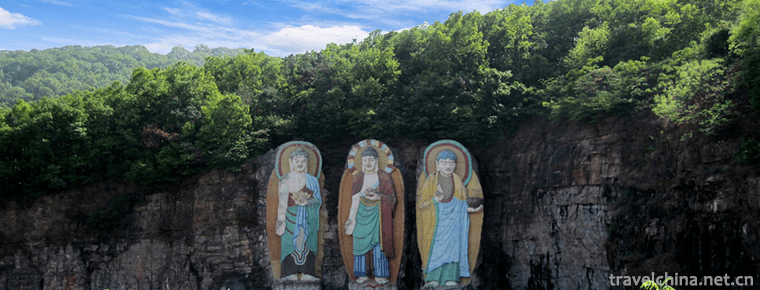
-
Shajiabang Yushan Shanghu Tourist Area
Shajiabang Yushan Shanghu Tourist Area is located in Changshu, a famous historical and cultural city in the south of the Yangtze River,.
Views: 212 Time 2018-12-06 -
Shennong Mountain Scenic Area
Shennong Mountain Scenic Area is a national AAAAA-level tourist area, located in Zhaozhai Village, Ziling Town, Qinyang City, Jiaozuo City, Henan Province, 25 kilometers northwest of the Taihang Mount.
Views: 212 Time 2018-12-17 -
Nanxiang ancient town
Jiading Nanxiang Ancient Town is a national AAAAA scenic spot, located in Nanxiang Town, Jiading District, Shanghai. There are famous scenic spots such as brick pagoda, Guyiyuan, Hebi Mountain, Liuyun.
Views: 116 Time 2019-02-07 -
Zhaohua Ancient City Scenic Area
The ancient city of Zhaohua has a long history and rich humanities in Zhaohua Town, Zhaohua District, Guangyuan City, Sichuan Province. The original name of Yichang County was changed to Zhaohua Count.
Views: 164 Time 2019-03-17 -
Burning Technology of Building Kiln and Building Calendula
Kiln building Calendula firing technology, the local traditional skills of Nanping City, Fujian Province, one of the national intangible cultural heritage..
Views: 289 Time 2019-05-05 -
King Yalu
King Yalu is the first long Miao heroic epic in history. It is usually chanted at the Miao spiritual ceremony. It is only handed down orally and has no written record. The history of the Miao people's.
Views: 146 Time 2019-07-10 -
Southwest University of Science and Technology
Southwest University of Science and Technology is located in Mianyang City, Sichuan Province. The school is a university built jointly by the Sichuan Provincial People's Government and the Ministry of.
Views: 211 Time 2019-08-31 -
Bao Zheng Bao Qing Tian
Bao Zheng (999 - July 3, 1062), He Xi Ren. Luzhou Hefei (now) Anhui Hefei Feidong People. Northern Song Dynasty Famous ministers..
Views: 171 Time 2019-09-11 -
Hefei University Of Technology
HeFei University of Technology (Hefei University of Technology) is directly under the Ministry of education of People's Republic of China. National Key Universities By Ministry of Education , Anhui Pr.
Views: 260 Time 2019-11-11 -
Suining transportation
Suining is a transportation hub city in Sichuan Province, with an equal distance of 128 km between Suining and Chengdu Chongqing. It is an important node city and secondary comprehensive transportation hub between Chengdu and Chongqing. 237km "3-way 7-line" railway.
Views: 123 Time 2020-12-16 -
Sports in Yibin
In 2019, Yibin sports team (member) won 4 world-class gold medals, 15 national gold medals, 30 provincial gold medals, 38 silver medals and 41 bronze medals. The annual sales of sports lottery tickets reached 410 million yuan, and 15 million yuan of public w.
Views: 329 Time 2020-12-18 -
Social security in Guangan
As of 2019, there are 64000 urban and 217000 rural minimum living allowances in Guang'an City. The per capita subsidy level of urban and rural minimum living security will be increased by 27 yuan and 8 yuan respectively (according to household insura.
Views: 324 Time 2020-12-19
